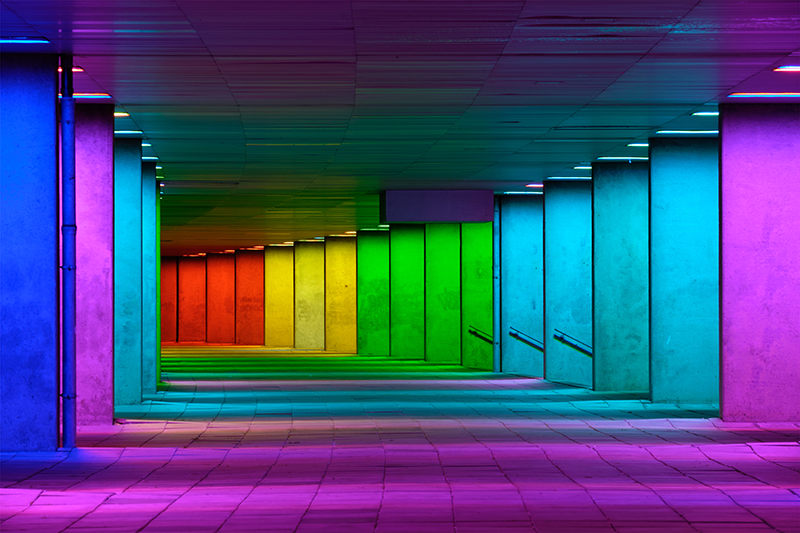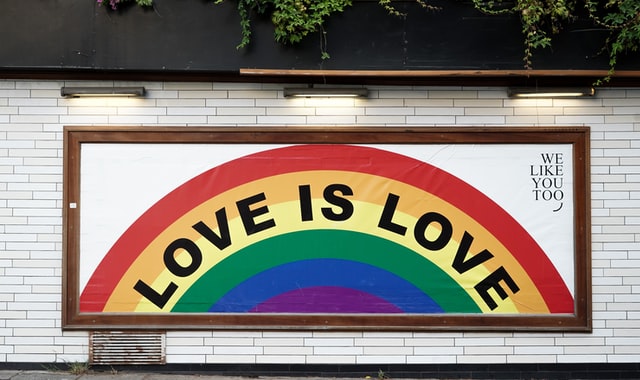Pride Month 2024 – Resources for Facilities Managers
Take action this Pride Month and educate yourself with these resources for facilities and workplace managers. Although Pride Month provides an opportunity to platform...
Read Full Article
How can FMs and property managers create more inclusive spaces within the built environment?
A 2019 survey showed that 50 per cent of the British public recognise that LGBTQ+ groups modify how they present in public space to avoid being the target of hostility.
"Queering Public Space," a collaboration between Arup and the University of Westminster is a report that explores the relationship between LGBTQ+ communities and public spaces. Dr Ammar Azzouz, was project co-lead along with Professor Pippa Catterall from the University of Westminster.
What lessons can be learned from this report to assist facilities and workplace managers in ensuring the built environment is supportive of the LGBTQ + community?
There are several ways in which spaces can be designed to be more welcoming and help people feel safer.
Lighting can contribute to safety and inclusion in public spaces. Studies have indicated that marginalised groups like LGBTQ+ people are particularly affected by nighttime vulnerability. This vulnerability is increased by poor design characteristics. Poorly lit, badly maintained and confined spaces can all convey a sense of danger. So, for marginalised groups, can harsh lighting.
Lighting natural or architectural elements, such as plants or sculptures, create an atmosphere conducive to feeling safer.
The report also states that security lighting is used – as it is designed to – to intimidate and exclude. In terms of brightness and light quality, an increased level of brightness will also not automatically make a space feel safer. The colour and finish of surfaces being lit can affect perceptions of brightness and sense of safety. Different atmospheres can be created with glossy/matte or black/white surfaces.
Public space is overall designed by an architecture profession that in Britain remains overwhelmingly male and white. A declining number of British LGBTQ+ architects feel able to be out at work and 39 per cent of them in the most recent survey in 2017 reported discrimination and homophobia from colleagues.
This demonstrates that there is a need for a more inclusive approach to architecture in the workplace as well as in public spaces.
Project Lead Dr Azzouz recently told the Association for Project Management,
“Project managers should seek diverse teams and encourage the participation of LGBTQ+ staff members in their projects when planning and designing spaces in our cities to better understand the challenges, needs, aspirations and hopes of LGBTQ+ people. Furthermore, project managers should engage with local LGBTQ+ communities to ensure their voice is heard and their needs are reflected in these projects.”
Another point raised in the report is that good design should contribute to the desistance of hate crimes and incidents.
Ways to do this include attention to the scale and mass of buildings, rooflines, colours and facades; the addition of curvilinear aspects; varied sightlines and the break-up of space; the softening of soundscapes and visual environments through the choice of surfaces, greenery and water features; the encouragement of footfall and pedestrian flow of a varied kind; design interventions that undermine dominant narratives; the nature, intensity, quality and positioning of lighting.
Preserving queer heritage in design is also important, as helping to preserve the character of sites through listing and requirements built into planning guidance would help LGBTQ+ people to recognise themselves in the built environment.
Through conducting surveys of the lived experience of LGBTQ+ people in London and their interaction with public spaces, the research identified a demand for “cosy corners”. These are private areas in public space, where users can see but not be seen.
It is argued that LGBTQ+ people need more privacy in public space because common activities that most people take for granted (holding hands with a partner for example) can draw negative attention.
It is interesting that traditional public seating is aligned to facilitate gazing into the distance, rather than face-to-face interactions. However, the LGBTQ+ community is also a group that is more likely to live alone than their peers, and therefore are more reliant on support networks and socialising outside the home.

Picture: a photograph of some art which shows a rainbow and the words "love is love"
Visible inclusion can be a powerful way of indicating support and undermining any public hostility towards the LGBTQ+ community.
Symbols such as rainbow crossings, signal inclusion to LGBTQ+ people and help to usualise their presence. However, care should be taken to avoid such interventions becoming tokenistic cliches.
Public art can be a way to achieve this. It can also break up space and provide colour, as well as adding to diversity in representation.
Queer heritage promotion through statues, memorials, plaques and street and building names are also recommended by the report.
Picture: A multicoloured illuminated rainbow passage
Article written by Ella Tansley | Published 01 July 2021
Take action this Pride Month and educate yourself with these resources for facilities and workplace managers. Although Pride Month provides an opportunity to platform...
Read Full ArticleOn 2 July, the security industry will come together for the first time to celebrate pride and LGBTQIA+ identities within the sector. Organised by Satia Rai, Director...
Read Full ArticleAs Pride Month progresses, ThisWeekinFM has collated several resources that businesses in the facilities and workplace management sector can use to help them build a more...
Read Full ArticleThis Pride Month, we are looking at what practical tips businesses can learn from the best-performing organisations from the UK Workplace Equality...
Read Full ArticleMany individuals have been working hard to keep diversity and inclusion firmly on employers’ agendas, both throughout the pandemic, and beyond. When it comes to...
Read Full ArticleThroughout June, we are celebrating Pride Month and focussing on how we can work together to better support our LGBTQ+ colleagues and employees, all year round. With...
Read Full ArticleSatia Rai joins ThisWeekinFM to discuss her passion for the private security industry, her activism and career highlights. Satia, who is the CEO of IPSA, began her...
Read Full ArticleThe LGBT+ in FM Network Group has published a best practice guide on what it is to be an ally and what that looks like at work. The guide covers a wide range of...
Read Full ArticlePareto FM’s Operations Director has been named Inspirational Role Model Of The Year at The Bank of London Rainbow Honours Awards 2024. The awards recognise...
Read Full ArticleLooking to attend an educational Pride Month event this June? ThisWeekinFM has produced a collection of professional events to help businesses learn how to build a more...
Read Full Article